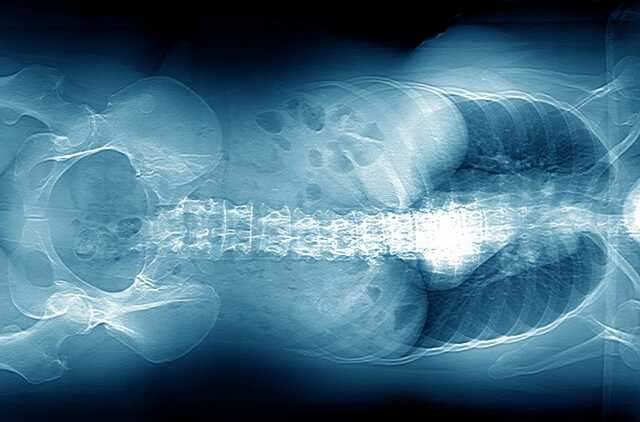At the end of January, three individuals died after having an x-ray of the stomach at the city clinical diagnostic center of St. Petersburg (GKDTS No. 1).
According to investigators, the deaths were caused by poor-quality barium sulfate, which is used to improve the contrast of images. When this information became public, it was revealed that there had been several similar deaths at the center as early as December.
Anna Rechinskaya, daughter of one of the victims, told “Rain” that her mother underwent an x-ray at the GKDC No. 1 on December 24th. According to Anna, her mother became unwell during the X-ray: she started to feel sick and she “barely ran to the toilet.” After that, Anna’s mother was taken to the Elizabethan Hospital, where she died on the night of December 24-25. The autopsy results stated heart failure as the cause of death. After the New Year holidays, Anna requested the X-ray report from GKDC No. 1, but she was only given the results. On January 20, Anna went to the center herself and demanded the necessary documents.
“She promised me that she would provide these documents, and I left hoping to receive at least something. And on January 26, I found out from the news about several patients who died after X-rays, and everything made sense to me,” says Anna. On January 26, two similar deaths of patients who had X-rays at GKDC No. 1, a 60-year-old woman and a 42-year-old man, are known. Two more people were taken to the hospital – soon one woman died.
On January 28, it was reported that there were over 20 victims, and the Investigative Committee initiated a criminal case under articles related to negligence causing death and storage of medical supplies that do not meet safety requirements. On the same day, Dmitry Lisovets, head of the St. Petersburg Health Committee, stated that the committee had identified all the patients who were x-rayed at the center on January 24–25. However, it was discovered that there were deaths back in December, and Anna Rechinskaya’s mother was not the only one.
On December 23, Tatyana Andreeva underwent an X-ray of her stomach at the State Children’s Children’s Center No. 1 due to suspected gastritis. Upon returning home, she started to feel sick, had tachycardia, and called for an ambulance. After half an hour, she stopped communicating. That same evening, her niece found her dead. The woman was given the same cause of death as Anna Rechinskaya’s mother – heart failure.
Another person who passed away after having an X-ray at GKDC No. 1 in December is 74-year-old Evgenia Volodina. After the procedure, she felt unwell with “some kind of white substance,” says Evgenia’s son Nikolai. Medical personnel were unable to save the woman. The autopsy results indicated that the cause of death was heart failure.
Relatives of the three who died in December approached the UK, and as Rechinskaya says, they were very surprised to learn about these deaths.
By information of the Joint Press Service of the Courts of St. Petersburg, the investigation believes that the head physician of the institution, Popov, approved the application for the purchase of the drug “Barium sulfate 0.10 (H2O)%”, which was used for procedures, from NevaReaktiv LLC. On the company’s Instagram page, a passport of this drug was published with a conclusion on compliance with GOST.
The head of the radiology department, Elena Medvedeva, according to the investigation, “being a qualified doctor and knowing for certain that the drug“ Barium sulfate 0.10 (H2O)% “is not a drug, organized its use by the staff.”
According to chemists, medical barium (0.05 (H2O)%) is impossible to be fatally poisoned. With fluoroscopy, it envelops the mucous membrane of the stomach and intestines, allows doctors to see a clear picture, but it is not absorbed and is completely eliminated from the body through the gastrointestinal tract. And industrial barium is toxic, absorbed by the body and disrupts the functioning of internal organs.
Procurement of medicines for state medical institutions must follow a strict procedure through a single portal. However, Dozhd was not able to find on this portal the contracts of GKDC No. 1 either for the purchase of barium sulfate separately, or for purchases in general from the NevaReaktiv company.
Anastasia Lapunova of Transparency International Russia explained that tracking the purchases of regional medical facilities can be difficult, and sometimes impossible. First, the federal Ministry of Health purchases drugs directly from the supplier, and then distributes them to regional departments. The federal purchase can be found on the portal, but the subsequent distribution is likely regulated by internal decrees of the Ministry of Health, which are not publicly available. When asked by Dozhd about the center’s procurement, Tatyana Martynenkova, a representative of the commission that selects suppliers and maintains documentation, replied that she did not comment.
“Usually, procurement is handled centrally by health authorities, but medical institutions have the right to conduct procurement on their own,” explains Larisa Popovich, director of the HSE Institute of Health Economics. In her opinion, in the case of GKDC No. 1, the procurement was not centralized. “Probably they ran out of this barium sulfate and made their purchase. And the supplier who came, perhaps, simply did not know the requirements [к препарату] and saw what seemed to be the product that he was able to deliver,” she says.




